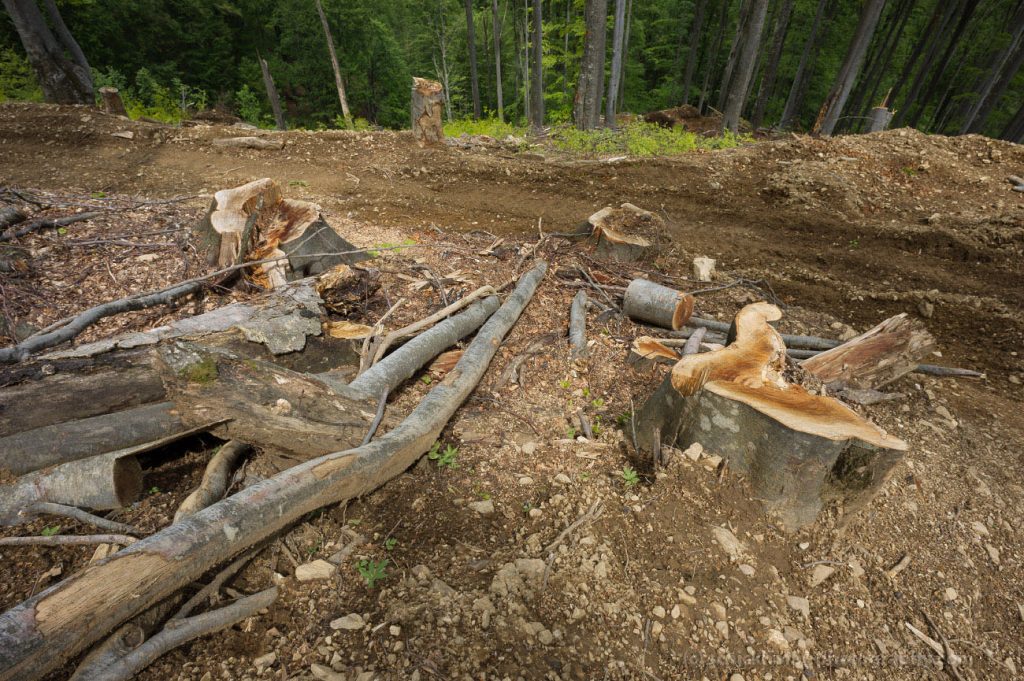Virgin forests are enormous stores of carbon, both above and below ground. Disturbing these forests, including through logging, releases this carbon either immediately into the atmosphere or over time when wood products breakdown and are burned. Either way, it’s bad for the planet.
In farmed forests, or plantations, the focus is on wood production, not carbon storage. After logging, a monoculture is grown, of the same age, the same size and the same density. For many years, spruce and pine monocultures were considered the most economical and hence these cover vast areas in Europe. To be most profitable, these tree farms are clear-cut logged. Such tree farms are much poorer in terms of carbon storage.
Symbiotic fungi, which promote plant growth in natural forests, are lacking in clear-cut areas. Increased light access also accelerates humus degradation, leading to an increased loss of carbon from the soil into the atmosphere. For the purposes of climate protection clear-cutting natural forests must cease.
Farmed forests are cut on short rotations, meaning that hardly any trees get to grow old. It can take many decades, if not many centuries, to regain the carbon lost when you log an older forest.

Logging as a solution to climate change?
The logging industry spruiks that logging is good for climate change because trees grow back and wood can become an alternative fuel to fossil fuels. They want to intensify the logging of natural forests as a solution to the climate crisis.
It’s true, trees do grow back and they do suck in carbon as they grow. However, logging an already established natural forest immediately releases massive amounts of carbon from both the above ground biomass and from the soil and it can take centuries for this to be recovered, depending on the age of the forest. We simply do not have centuries to solve the climate crisis.
Primeval forests have been absorbing and storing vast amounts of carbon over millennia and these carbon ‘sinks’ remain in virgin forests to this day. When these forests are cleared or burned, greenhouse gases are released, adding more dangerous carbon emissions to the atmosphere.
According to the Paris Climate Agreement, carbon emissions must be reduced to a minimum by 2050. If this, and other targets are not met, then dangerous ‘tipping points’ will be reached, causing catastrophic changes to the planet and to human beings.
To avoid such tipping points, emissions from all carbon sources must be eliminated, including from the burning of wood and forest products. Biomass from native forests only adds more carbon into the atmosphere, and this is something that we simply cannot afford.

Primeval forests are climate protectors
Professor Brendan Mackey and his colleagues at the Australian National University, compared the climate benefits of protecting natural forests over logging them for wood products. His paper clearly concluded that the conservation of natural forests has a much greater effect on the global climate than logging them.
As well as massively reducing fossil fuel emissions, Professor Mackey, alongside other scientists around the world, argues that saving natural forests is a critical step in protecting the planet and humans from dangerous climate change.

